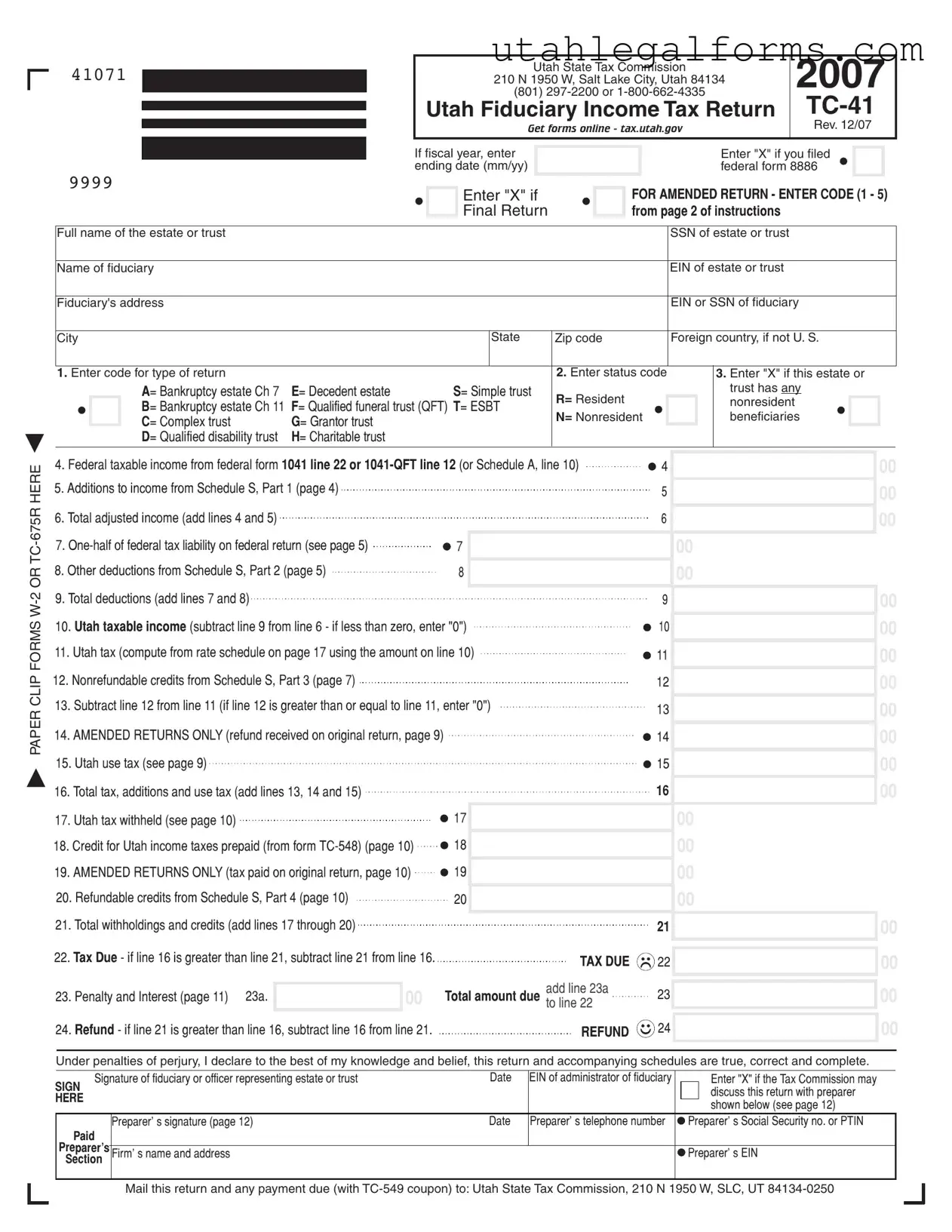Fill a Valid Utah Tc 41 Template
The Utah TC-41 form is the official document used to file the Utah Fiduciary Income Tax Return for estates and trusts. This form ensures that fiduciaries report income, deductions, and tax liabilities accurately to the state tax commission. If you need to fill out this form, click the button below to get started!
Access Utah Tc 41 Now
